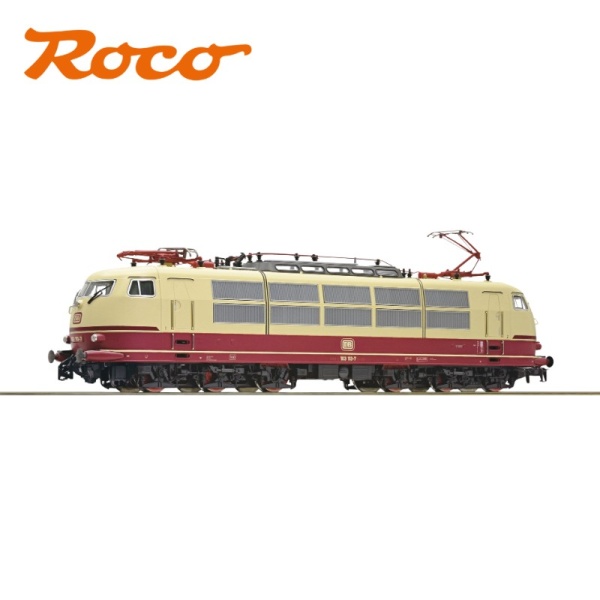BR A3 60103 'FLYING SCOTSMAN' (DCC-SOUND)
The Flying Scotsman, a name, which inspires imagination. ‘Flying Scotsman’ was the name of the daily 10:00 AM connection between London and Edinburgh which had been running since 1862. From 1924 London and North Eastern Railway Class A1 ‘Pacific’ Number 4472 also carried this name. The A1’s were the most powerful locomotives used on the London and North Eastern Railway (LNER) and were designed by Nigel Gresley its ‘Chief Mechanical Engineer’.
On February 24, 1923, it went into operation as LNER number 1472, a year later it was given its famous name and it participated as number 4472 in the British Empire Exhibition in London, which increased its recognition enormously. It became the ‘show’ locomotive of the LNER and inaugurated the non-stop ‘Flying Scotsman’ (summer only) service on May 1, 1928. For the first time a steam locomotive ran the 393 miles (632 km) between London and Edinburgh on a scheduled service without stopping. How was this possible? Shortly before the first of these runs, Flying Scotsman’ was equipped with a corridor tender, which not only offered a lot of space for coal and water, but also a corridor to the first carriage of the train.
This allowed a crew change during the run. This locomotive set another milestone in 1934. During a test run the ‘Flying Scotsman’ became the first steam locomotive in Great Britain to officially reach a speed of 100 mph (160.9 km/h) clear proof for the LNER directors of the suitability of steam locomotives for express train service. During World War II, the ‘Flying Scotsman’ had to change its bright green for a sombre 'Wartime Black’. After the end of the war, it was painted again in LNER ‘apple green’. In addition, it was converted to the class A3. In 1948, after the establishment of British Railways, new colours came into use and its number became 60103.
For a time, this locomotive was in ‘express passenger blue’ livery and then later ‘BR Green’. Under threat of being scrapped it was purchased by wealthy businessman, Alan Pegler who had it restored to LNER condition. In 1968, it once again hauled a train non-stop from London to Edinburgh. In 1969, it went to the USA and Canada for a promotional tour for British foreign trade. In 1988, it participated in the ‘Aus Steam 88 Festival’ in Australia, where it claimed a new nonstop record for steam locomotives of 425 miles (680 km). Now, it was an international celebrity. Financial difficulties led several times to a change in ownership. In 2004, it finally came to the National Railway Museum in York, England thanks to a donation campaign to buy this iconic locomotive.
It was completely restored between 2006 and 2016. February 25, 2016 was the big day: For the first time in years the ‘Flying Scotsman’ ran again from the London ‘King’s Cross’ to York, as number 60103 in ‘BR Green’ with double chimney and smoke deflectors looking just as it did when it last ran for BR. An emotional moment for the many enthusiasts, who watched it go by. And now, in 2023, this unique steam locomotive is celebrating its 100th anniversary. In addition, it is adorning the H0 range from Märklin and Trix.
Class A3 steam express locomotive with a tender. Version as museum locomotive 60103. The locomotive looks as it did in 1963 with a Corridor tender and smoke deflectors, thus as the locomotive currently looks operational and based at the National Railway Museum in York, England.
Model: The locomotive has an mfx+ digital decoder and extensive light and sound functions. It also has controlled, high-efficiency propulsion with a flywheel in the boiler. 3 axles powered. Traction tires. The locomotive and tender are constructed mostly of metal. The locomotive has a factory-installed smoke unit with speed-dependent, dynamic smoke exhaust and it can be controlled digitally.
Dual headlights on the locomotive change over with the direction of travel and there is a lamp on the back of the tender. These lights will work in conventional operation and can be controlled digitally. The lamp on the back of the tender can be changed to a red lamp. A third headlight on the front of the locomotive can be controlled separately as an electric lamp and it can be changed to red. The cab lighting and firebox flickering can be controlled digitally. The lighting on the tender corridor can be controlled digitally. Maintenance-free warm white and red LEDs are used for the lighting. There is an adjustable close coupling with a guide mechanism between the locomotive and tender.
The back of the tender has a close coupler with an NEM pocket and a guide mechanism. The buffer height on the locomotive and tender adheres to the NEM. Brake hoses, imitation prototype couplers, and closed cylinder covers are included.

